Lately I have been working with a number of organizations that are taking a fresh look at their strategic planning tools, particularly their marketing briefs. These organizations are examining the impact of digital media and technology on their own processes for defining, documenting, and sharing marketing briefs with their agencies and teams. Plenty of pieces have been written about briefs: how they are essentially the same, how briefs need to evolve in a digital world, how briefs need to become more social, more experiential….or might not be necessary at all. Brand strategy, channel planning, service design, and business models are all clashing into each other these days, which makes conventional planning processes and tools feel less relevant and complete at times.
In helping organizations solve this puzzle, I have become borderline-obsessed with the power of questions. Specifically, what the question is and how it is asked. I have come across a few things lately that have really inspired me, and made me start to question my own questions.
A More Propelling Question
A Beautiful Constraint is a fantastic book by the folks from eatbigfish. Their thesis is that a constraint should not be considered a limitation, but rather a stimulus for finding a better way to do something. The book outlines a clear methodology to identify and link a Bold Ambition with a Significant Constraint to create what they term a ‘Propelling Question’.
Source: http://www.abeautifulconstraint.com/
“It is called a propelling question because the presence of those two different elements together in the same question does not allow it to be answered in the way we have answered previous questions; it propels us off the path on which we have become dependent.”
The authors use an example from car racing. When a Chief Engineer from Audi gave directions to his team to prepare a car for the famous 24-hour Le Mans race, he did not focus on the obvious question of “how can we build a faster car?” Instead, he asked the propelling question of “how could we win if our car could go no faster than anyone else’s?” This question forced his team to think in a new way, and they focused on fuel efficiency rather than speed. Audi ended up winning the race for the next 3 years because their car did not have to make as many pit stops.
A More Magnetic Question
Neil from Brightworks was kind enough to invite me to his fantastic Innovation Day last week, where he had Eric Beynon from the Sustainable Growth Company speaking. Eric is behind the famous Carbon XPRIZE competition that awards $20M for an innovation that helps to tackle climate change. He explained that one of the keys to motivating people to enter a large R&D contest (beyond awarding $20M!) is to frame a challenge question in a way that massively piques curiosity. In the case of the Carbon XPRIZE, this meant not posing a general challenge focused on the familiar goal of “reducing climate change”. Instead, he reframed the question to be much more clear and provocative: “How can carbon dioxide be turned from a liability into an asset?” I’m sure the answer is not simple, but understanding the question is. The response to this question has been phenomenal, and 27 teams were recently selected to proceed to the second round. According to Eric: “a good question is like a magnet.”
A More Beautiful Question
How can you create a propelling or magnetic question if you are penalized for even asking one? Warren Berger explores this challenge in depth in his book A More Beautiful Question. It is a fascinating study of the power of inquiry to spark ideas, and the challenges facing those who dare to ask big questions. The book describes how traditional schooling discourages students from asking questions, and instead focuses on enabling the ‘right answers’.
Source: http://amorebeautifulquestion.com/
Businesses then in turn discourage big questions by being focused on “the doing”, and viewing big questions (usually starting with WHY) as a potential disruption to efficiency. Worse is the trap of “the knowing”, and the culture of assuming that all answers have already been discovered. Asking big questions requires stepping back from both “the doing” and “the knowing”, and it can take brains and guts. I love this quote from an IDEO Creative Director on how he breaks through these barriers:
“I position myself as a relentless idiot at IDEO. And that is not a negative, it’s a positive. Because being comfortable with now knowing—that’s the first part of being able to question”.
It is a great time for marketers to step back and re-examine their own strategic planning processes and tools. In doing so, it is important not to become distracted by the digital technologies that can lead to new creative solutions. It is more important to focus on how to better identify and frame the underlying strategic questions that these technologies may help to answer.
